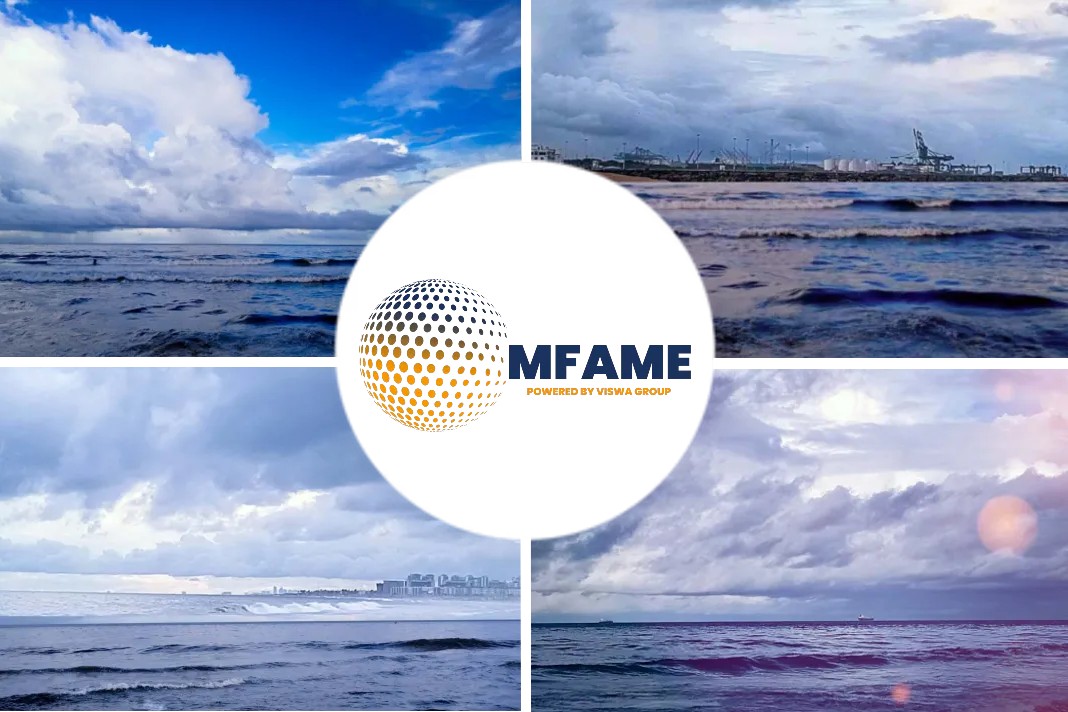
The impacts of global warming engulf the world, evident in the sudden flash floods, melting glaciers, increasing temperatures and whatnot. Hence all sectors and industries across the globe strive to tackle this grave environmental issue.
Consequently, the shipping sector is not untouched by it; it is a major generator of air pollution and harmful emissions. Per IMO, the shipping industry is responsible for 940 million tonnes of CO2 annually, about 2.5% of the world’s total CO2 emissions. Most of these emissions occur when ships are at sea; some amounts occur when ships are docked.
With the maritime sector responsible for transporting approximately 90% of world cargo, it faces enormous pressure to reduce its carbon footprint.
Hence, the main focus of the shipping industry now is to find green energy solutions, employ eco-friendly technologies and reduce the atmospheric emissions generated by ships to as minimal as possible.
Stakeholders and other shipping industry experts are seeking several smart solutions to achieve these goals of ‘green shipping’. Besides opting for green fuels, developing efficient energy-saving engines and sustainable shipping technologies like scrubbers, ports offer another solution: cold ironing.
What is Cold Ironing At Ports?
Cold ironing is a term in the shipping industry that came into vogue when all the vessels had coal-fired engines. Once a ship was at port, there was no requirement for keeping the fire lit, and its iron engines could cool down, gradually going cold, hence the word ‘cold ironing’.
However, in present times, the term denotes the process of providing shoreside electrical power to ships berthed at the port while their main and auxiliary engines are turned off.
Cold ironing at ports is a popular concept that supports Green shipping.
While shutting down a ship’s main engines when berthed at port is common, auxiliary engines had to keep running to power the cargo handling equipment and other ship’s services while it was at port.
These engines were the main generators of harmful emissions since they ran on heavy fuel oils or bunkers, releasing SOx, NOx, CO2, particle discharge, noise, and vibration.
Cold Ironing at ports is a viable solution to tackle these issues. It is an anti-pollution measure to decrease air pollution from diesel generators by choosing more eco-friendly shore electric power as the alternative.
In cold ironing, a ship’s engines are turned off when berthed at the port. It is plugged into an onshore power source. The ship’s power load is transferred to the shore-side supply without causing any disruption to the onboard processes and services.
Hence, onboard equipment, refrigeration, heating, cooling, lighting and other emergency equipment receive continuous electrical power from the shore supply source while the vessel carries out its loading and unloading operations.
What Does The Law Say About Cold Ironing At Ports?
Cold Ironing has been recognised as an effective measure for reducing harmful emissions from ships while they are docked at ports; hence laws and regulations in some countries have been put in place so that shipowners and operators abide by the same.
One such prominent law is the EU-approved Directive 2014/94/EU, which mentions that the member states should implement alternative infrastructure like shoreside power technologies by 2025. It would enable all major European ports to provide electricity from land to ships docked at the ports.
The European Union’s TEN-T Program has also stated that in the realm of shore power, funding can help cover 50% of research and 20% of its implementation expenditure.
Is Cold Ironing At Ports Widespread?
As per the EU’s directive, all major European ports must have the infrastructure required to provide cold ironing by 2025.
While Europe is taking significant steps in this direction, most ports in Southeast Asia, Asia and Africa do not have infrastructure that could support cold ironing simply because establishing these facilities requires enormous amounts of money in planning, research and development and implementation. Thus, disparities continue.
Does Cold-Ironing At Ports Cover All Kinds of Vessels?
Not all types of ships docked at ports can avail benefits of cold ironing. Cold ironing is most widespread in the cruise ship industry, generating more emissions than cargo ships. It is also prevalent in the ferry business.
This is because both cruise ship and ferry markets face enormous pressures to reduce their emissions as cruise ship and ferry terminals are often located near historical centres or major cities.
Thus, an increasing number of cruise ships, passenger ships, ferries, LNG Tankers and container vessels use onshore power even when visiting the port only for a few hours.
However, bulk vessels that comprise most of the fleet cannot do so, especially liquid bulk vessels, due to their high energy requirements, strict safety rules and high risk of onboard fire and explosions.
Presently, there is only one operational shore power system in the world catering to liquid bulk vessels. It is situated in Long Beach, California and was designed in 2007 and started functioning in 2009.
It can be used by a specific vessel type, i.e. the BP Alaska Class, connected by three 6.6 kV cables at the vessel’s aft side using its provision crane. Another pier was built to sustain the cable system.
Additionally, the system has been operating for more than a decade without any major accidents, proving that implementing shore power systems for bulk ships is achievable.
Requirements for Cold-Ironing At Ports
- Essential electrical infrastructure at ports so that all engineered and integrated systems fit all kinds of ports.
- Necessary electrical infrastructure on ships, either retrofits or new builds.
- Connections and control solutions for personal safety and continuous transfer of power.
- Complete onboard solution, including necessary power equipment for connecting the vessel to a shore-side power point.
- Equipment to enable automated power transfer of the ship’s load from its power plant to the shore-side source and back.
Did you subscribe to our daily newsletter?
It’s Free! Click here to Subscribe!
Source: Marine Insight






















